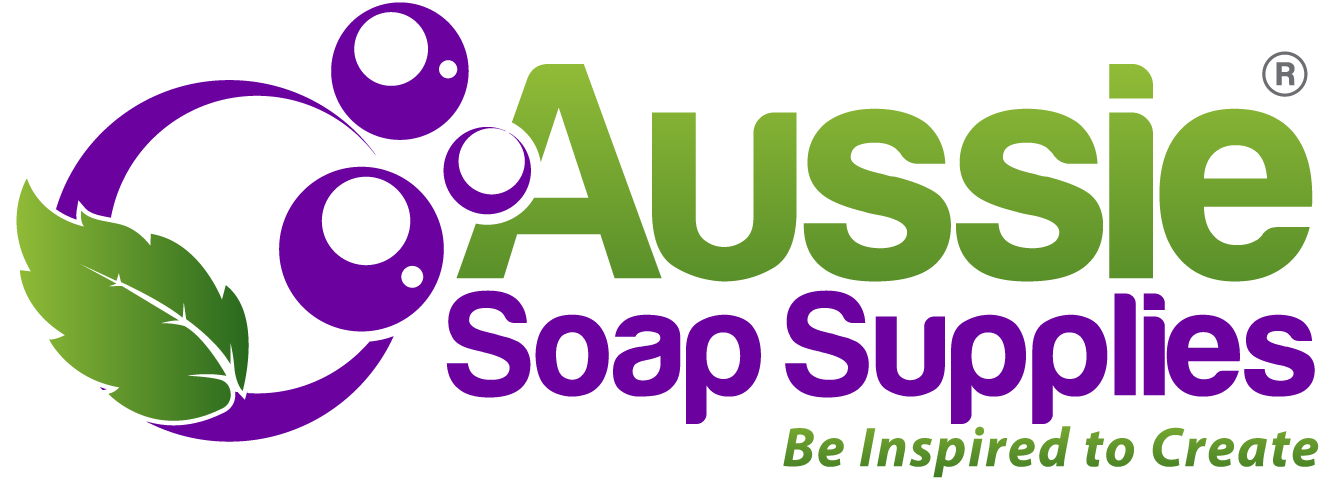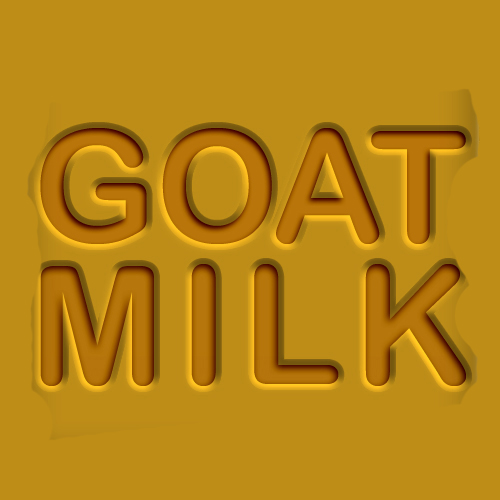
Milk soaps can be a little tricky for the novice, so we recommend you begin soaping with some milk-free recipes and progress to this one.
The low pH level of Goats Milk is close to our skin's pH, making it a very gentle cleanser. Goat’s milk also contains alpha hydroxyl acids, which are known for their restorative and rejuvenating qualities.
Milk and Sodium Hydroxide (Lye) do not like each other! You can end up with a yellow/tan coloured smelly mess if you don’t plan ahead. There are several methods you can use to combat this problem – and the secret is the temperature of milk and the temperature of lye water.
If you are a beginner with a few batches under your belt, this is a good way to get into milk soaping – we recommend you start with 50% Goats milk and 50% Distilled Water in your first few recipes.
Please read these instructions right through to the end TWICE before beginning your soap. Planning is the key! Tips and methods are listed underneath the recipe.
Ingredients:
- 350g Palm Kernel Oil (28%)
- 850g Olive Oil (67%)
- 60g Cocoa Butter (5%)
- 173g Sodium Hydroxide - Lye
- 200g Distilled Water
- 200g Fresh Goats Milk – frozen into ice cubes, or if you prefer to purchase our Powdered Goatsmilk, see the instructions below to substitute - this is adjusted to use powdered milk
- Up to 30g (6 tsp) Essential Oils or Fragrance if desired
Equipment:
All your regular Cold Process Soap making equipment and Safety Gear INCLUDING GOGGLES AND GLOVES
Jug to hold 500ml to 1 litre traced soap
Cups to mix and hydrate the colours
Small Beaker to hold the Fragrance - helpful, not essential
Isopropyl Alcohol and Sprtizer Bottle – optional – to prevent soda ash if you decide on a textured top
Method:
If you are a beginner, we recommend you make a few batches before attempting this soap. For how to make soap from Scratch, please see our Cold Process Soapmaking Instructions. You can also watch Soap Queen's You Tube Series on Cold Process Soapmaking.
The main difference with Goats milk CP Soap and milk free soap making is preparation - prepare the concentrated solution of Sodium Hydroxide (Lye) and water the night before and allow to cool or even chill the concentrated lye mixture if you are soaping in high summer temperatures.
Have all other ingredients ready weighed and measured, and then add the iced Goats milk to the cool lye water and stir to dissolve. This will eliminate most of the curdling problems and discolouring issues that occur. Add this mixture immediately to the warmed oils and stir as usual. Add fragrances, blend, pour and insulate.
Many soapers find the ammonia type smell that is evident during the first few weeks quite unpleasant, BUT the odour soon dissipates and you will then smell the sweet natural fragrance or your Essential Oil or Fragrance after a few weeks – it is not ruined, it is going to smell *weird* for a while due to the milk content.
Some tips for you to remember when using milks in your soap:
• Use Ice Cubes: When you buy fresh liquid Goats Milk, weigh into recipe portions and then freeze in ice cube trays. Store in freezer bags clearly labelled with the contents including weight. This way, you are ready to make several batches of Goats milk CP and there is no waste.
• Pre-Cool Lye Water: Mix lye with half the required water, and set aside (secured from small children and animals). When this has cooled completely, stir in ice cubes of milk and stir to dissolve cubes - as if you were trying to get a jelly to set early. Combine immediately with liquid oils, bring to trace and pour.
• Use the Slushy Method: Freeze the required quantity of milk in a ziplock bag resting in a bowl and then allow to semi defrost. Mix lye with half the portion, and set aside (secured from small children and animals). When this has cooled completely, stir through slushy semi melted milk until dissolved. Combine immediately with liquid oils, bring to trace and pour
• If using Powdered Goats Milk or Buttermilk Powder, reserve a cup of distilled water from the recipe, heat, and add either 4 tablespoons of Buttermilk Powder to this to make a slurry or 40g of Goatsmilk Powder mixed to a slurry - make sure there are no lumps. Add this at medium trace and then pour.
Remember if using liquid milks/yoghurt to deduct the volume of milk from your water content and when the cold lye water and icy milk is all liquid, combine as usual with your oils. I personally prefer Goat’s Milk or Buttermilk soap, but if you wish to try cows milk, (or in fact Yak’s milk!!) you can use the same methods. Some soapers make Coconut Milk, fresh Buttermilk and even Carnation (Evaporated) Milk soap.
Yoghurts work well in soap too and my personal method is to add a good dollop of fresh yoghurt at trace, rather than freezing it. Yoghurt leaves the skin very soft and satiny. I make a gorgeous Strawberry and Yoghurt Cold Process Log – the secret was slightly under-scenting the Strawberry fragrance – at about 2% of the oil weight maximum – so that it was really subtle - YUM!
Soap Stamp Goat Milk













